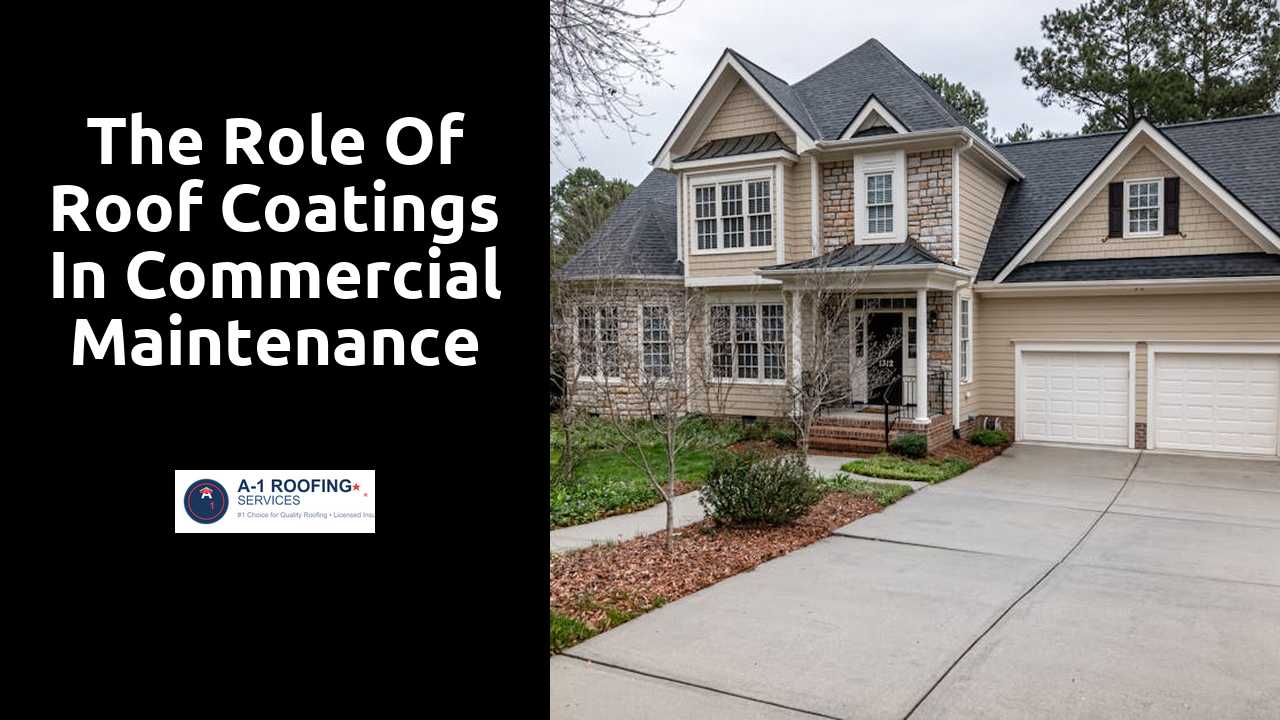
The Role of Roof Coatings in Commercial Maintenance
Table Of Contents
Environmental Impact of Roof Coatings
Roof coatings offer significant advantages in terms of environmental sustainability. Many formulations incorporate reflective materials that reduce heat absorption, thereby lowering the urban heat island effect. This leads to decreased energy demand for air conditioning in commercial buildings, which contributes to reduced greenhouse gas emissions. Additionally, eco-friendly coatings can be derived from renewable resources, further minimizing their environmental footprint.
The application of roof coatings can also extend the lifespan of existing roofs, reducing the need for frequent replacements. This longevity results in less waste, promoting a more sustainable lifecycle for building materials. Furthermore, many manufacturers are now producing products that have low volatile organic compounds (VOCs), thereby improving air quality both indoors and outdoors. The thoughtful selection of roof coatings can play a pivotal role in a building’s overall sustainability strategy.
More tips and tricks can be found here.
Sustainability and Energy Efficiency Considerations
The selection of roof coatings plays a critical role in optimizing energy efficiency within commercial buildings. Reflective coatings, for instance, can significantly reduce the heat absorbed by a roof, promoting cooler internal temperatures during the summer months. This not only contributes to reduced air conditioning costs but also diminishes the overall energy consumption of the building. Sustainable options may include coatings made from recycled materials, offering a dual benefit of environmental friendliness and performance.
Additionally, the longevity and durability of roof coatings are essential for sustainability efforts. High-quality coatings often require less frequent replacement, minimizing waste over time. Proper application and maintenance also extend the lifespan of roofs, thereby conserving resources and reducing the frequency of renovations. Investing in energy-efficient coatings supports a building's long-term operational goals while aligning with broader sustainability initiatives.
Choosing the Right Roof Coating for Your Building
Selecting an appropriate roof coating involves evaluating the specific needs of your building and the environment. Factors such as climate, exposure to UV radiation, and building design play significant roles in this decision-making process. Different coatings offer varying levels of durability, reflectivity, and resistance to environmental stressors. A thorough assessment of these elements will help ensure that the coating chosen can withstand local weather conditions while maximizing the lifespan of the roof.
Additionally, building type and usage can influence the choice of roof coating. Commercial structures may require solutions that not only provide waterproofing but also contribute to energy efficiency. For instance, reflective coatings can help lower cooling costs in warmer climates, while elastomeric and silicone coatings offer benefits like seam strength and flexibility. Consulting with a roofing professional can further assist in identifying the best options tailored to specific building characteristics and intended performance outcomes.
Factors to Consider for Different Roof Types
Different roof types present unique challenges and opportunities when selecting a suitable roof coating. For instance, flat roofs typically require coatings that offer excellent waterproofing capabilities and reflectivity to reduce heat absorption. These features help in extending the life of the roof and improving energy efficiency. Conversely, pitched roofs may benefit from lighter coatings that can enhance aesthetic appeal while providing adequate protection against the elements.
Material composition is another critical factor that should guide the coating choice. Metal roofs, for example, often demand specialized coatings that prevent rust and corrosion while maintaining a sleek look. Asphalt shingles, on the other hand, typically require coatings that provide UV protection and minimize thermal shock. Understanding these distinctions ensures that the roof coating selected provides optimal durability and performance, tailored specifically to the unique characteristics of each roof type.
Common Challenges with Roof Coatings
Roof coatings, despite their many benefits, can encounter several challenges during application and maintenance. Issues such as poor surface preparation can lead to adhesion problems, resulting in premature failure of the coating. Moisture trapped underneath the coating can cause blistering, peeling, and other detrimental effects on the roof surface. Environmental conditions during installation also play a crucial role; high humidity or extreme temperatures can adversely affect the curing process, ultimately compromising the effectiveness of the coating.
Another challenge lies in the selection of the appropriate coating for specific roof types. Different materials require tailored formulations to achieve optimal performance. For instance, elastomeric coatings may not adhere well to certain substrates if not correctly matched. Regular maintenance is also essential, as wear and tear over time can lead to performance degradation. Property managers must be vigilant in identifying signs of coating failure, as timely intervention can prevent more significant issues and extend the roof's lifespan.
Identifying and Mitigating Potential Issues
Proper evaluation of the roof surface prior to applying coatings is crucial. Issues such as existing damage, inadequate drainage, or dirt accumulation can hinder the effectiveness of the coating. Identifying these problems early allows for timely repairs, ensuring that the roof will properly benefit from the new application. Conducting inspections and performing necessary maintenance will help maintain the integrity of the coating and prolong its lifespan.
Ongoing monitoring after installation is equally important. Regular checks can reveal signs of wear, peeling, or blistering, which may indicate underlying issues that require attention. Addressing these concerns quickly can mitigate further damage and extend the performance of the coating. Establishing a maintenance schedule will facilitate timely interventions, ultimately safeguarding the investment in roof coatings and enhancing overall building efficiency.
Related Links
DIY Maintenance Tips for Small Business RoofsLong-Term Maintenance Plans for Flat Commercial Roofs